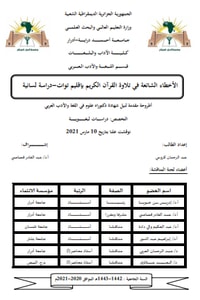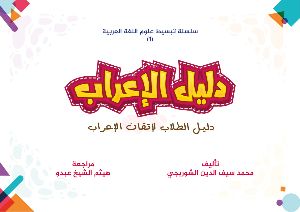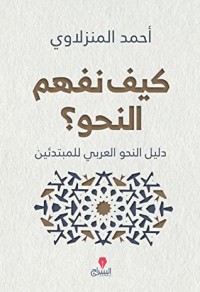
كتاب الأخطاء الشائعة في تلاوة القرآن الكريم بإقليم توات - دراسة لسانية بقلم كرومي عبد الرحمن .. خلفية الأطروحة: توات منطقة تقع في أقصى صحراء الجزائر، يهتم جلّ ساكنتها بالقرآن الكريم تلاوة وحفظا وتدارسا، فيتلونه برواية ورش فرادى وجماعات، نُخبا وعوام، بأحكام وبغير أحكام، في المناسبات وبدون مناسبات، ولا تكاد تخلو تلاوته من أخطاء لسانية؛ فالمتأمل فيها يقف على حجم هائل من الهفوات الصوتية، والزلات الصرفية، والعثرات النحوية، والغلطات الدلالية. والأسباب في ذلك مختلفة ومتنوعة، أبرزها: التأثر باللهجات المحلية، الخلط بين الروايات القرآنية، عدم تمييز المتشابه، الجهل بأحكام التجويد وقواعد اللغة، الفهم السطحي للألفاظ القرآنية. ولتفادي مثل هذه الأخطاء، يجب تلقّي القرآن الكريم على يد معلِّم ماهر بالأحكام متقن للقواعد، والإنصات بأذن صاغية للقارئ الـمُجيد، والتفحّص بعين واعية لرسم القرآن الـمَجيد، والاستعانة بمصادر التفسير ومراجعه؛ من كُتب التفاسير والعلماء النحارير، لإدراك الدلالات المقصودة والتأويلات المحمودة. Touat is a region located at the far end of the Algerian desert, where most of its inhabitants are interested in reciting, memorizing and studying the Holy Quran, and they recite it in individual and collective workshops, elites and commoners, with rulings and without judgments, on occasions and without occasions, and its recitation is hardly devoid of linguistic errors. The contemplative stands on the enormous size of vocal lapses, morphological slips ,grammatical pitfalls, and semantic errors. The reasons for this are different and varied, the most prominent of which are: influencing the local dialect, mixing Qur’anic narratives, non-discrimination of similarities, ignorance of intonation provisions and grammar, and superficial understanding of Qur’anic expressions. In order to avoid such errors, the Holy Qur’an must be received by a skilled skilled in rulings who is qualified in the rules, listening with a good ear to the glorified reader, examining with a conscious eye the drawing of the glorious Qur’an, and using the sources of interpretation and references, from books of exegesis and scholars, to understand the intended connotations and praiseworthy interpretations.
كتاب الأخطاء الشائعة في تلاوة القرآن الكريم بإقليم توات - دراسة لسانية بقلم كرومي عبد الرحمن .. خلفية الأطروحة: توات منطقة تقع في أقصى صحراء الجزائر، يهتم جلّ ساكنتها بالقرآن الكريم تلاوة وحفظا وتدارسا، فيتلونه برواية ورش فرادى وجماعات، نُخبا وعوام، بأحكام وبغير أحكام، في المناسبات وبدون مناسبات، ولا تكاد تخلو تلاوته من أخطاء لسانية؛ فالمتأمل فيها يقف على حجم هائل من الهفوات الصوتية، والزلات الصرفية، والعثرات النحوية، والغلطات الدلالية. والأسباب في ذلك مختلفة ومتنوعة، أبرزها: التأثر باللهجات المحلية، الخلط بين الروايات القرآنية، عدم تمييز المتشابه، الجهل بأحكام التجويد وقواعد اللغة، الفهم السطحي للألفاظ القرآنية. ولتفادي مثل هذه الأخطاء، يجب تلقّي القرآن الكريم على يد معلِّم ماهر بالأحكام متقن للقواعد، والإنصات بأذن صاغية للقارئ الـمُجيد، والتفحّص بعين واعية لرسم القرآن الـمَجيد، والاستعانة بمصادر التفسير ومراجعه؛ من كُتب التفاسير والعلماء النحارير، لإدراك الدلالات المقصودة والتأويلات المحمودة. Touat is a region located at the far end of the Algerian desert, where most of its inhabitants are interested in reciting, memorizing and studying the Holy Quran, and they recite it in individual and collective workshops, elites and commoners, with rulings and without judgments, on occasions and without occasions, and its recitation is hardly devoid of linguistic errors. The contemplative stands on the enormous size of vocal lapses, morphological slips ,grammatical pitfalls, and semantic errors. The reasons for this are different and varied, the most prominent of which are: influencing the local dialect, mixing Qur’anic narratives, non-discrimination of similarities, ignorance of intonation provisions and grammar, and superficial understanding of Qur’anic expressions. In order to avoid such errors, the Holy Qur’an must be received by a skilled skilled in rulings who is qualified in the rules, listening with a good ear to the glorified reader, examining with a conscious eye the drawing of the glorious Qur’an, and using the sources of interpretation and references, from books of exegesis and scholars, to understand the intended connotations and praiseworthy interpretations.
المزيد...






















